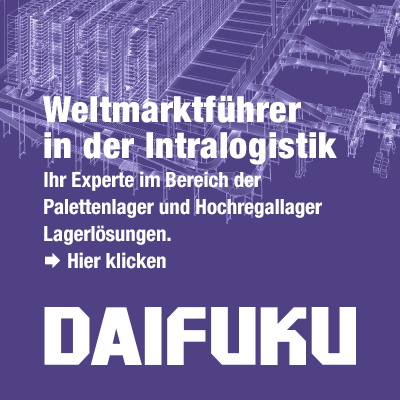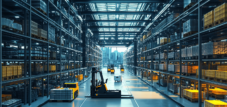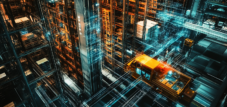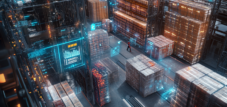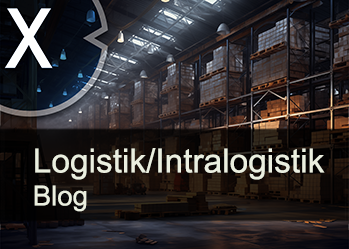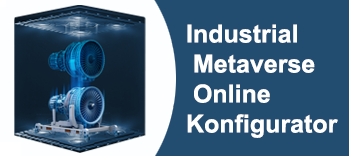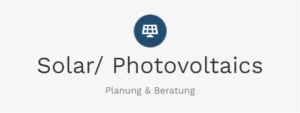Market analysis and technology leader: A comprehensive Q&A guide to the top manufacturers of high-bay warehouse
Xpert pre-release
Language selection 📢
Published on: July 26, 2025 / update from: July 26, 2025 – Author: Konrad Wolfenstein

Market analysis and technology leader: A comprehensive Q&A guide to the top manufacturers of high-bay warehouse – Image: Xpert.digital
From the craft for high-tech: modern warehouse automation (reading time: 53 min / no advertising / no paywall)
Basics and market overview of the automated high -bay warehouse
What exactly is a “high -bay warehouse” and what are the fundamental differences?
The term “high -bay warehouse” is not clearly defined in the logistics industry and, depending on the context, can describe three fundamentally different types of loading units and the associated storage systems. A precise distinction is crucial for understanding the market and the technologies of the leading manufacturers.
Definition 1: Instalogistics container (small parts container, bins, boxes)
In the context of modern warehouse automation, a high -bay warehouse or small division warehouse most often refers to standardized small parts containers. These containers, often made of plastic, serve to store and transport smaller articles (so -called “small parts”). The storage systems designed for this are highly dynamic, automated small parts warehouse (AKL). Technologically, these are often miniload systems in which a shelf control unit (RBG) handles individual containers, or shuttle systems, where autonomously driving shuttles ensure extremely high input and outsourcing speeds on each warehouse level. The focus of these systems is on maximum throughput, fast cycle times and the efficient provision of goods for picking according to the goods-to-person principle (Goods-to-person, GTP).
Definition 2: Pallets and grid boxes (large charge carrier)
This is the classic definition of a high -bay warehouse (HRL). These are the storage of standardized large -scale charging carriers such as Euro pallets, industrial pallets or lattice boxes. These systems, also referred to as Unit-Load AS/RS (Automated Storage and Retrieval System), are designed for maximum storage density and reach heights of over 40 meters. The storage and outsourcing is carried out by large, rail-guided shelves (RBG or Stacker Cranes), which can move heavy loads of up to several tons. These HRL serve primarily to store raw materials, production material or ready -to -ship pallets in large quantities. A special design is the silo construction, in which the shelf structure itself forms the load-bearing element for the roof and walls of the building, which saves construction costs and space.
Definition 3: ISO shipping container (container high-base warehouse)
This represents a highly specialized and revolutionary niche. This deals with the automated storage of 20 or 40-foot iso containers, as used in intermodal freight transport. This technology does not aim at classic distribution logistics, but on the optimization of port and envelope terminals. The leading example of this is the Boxbay system, which stacked containers up to eleven levels in a massive steel shelf construction. The decisive advantage is the direct access to each individual container, which eliminates the extremely time and cost-intensive surrounding (“reshuffling”) in conventional container yards.
Transformation of logistics: groundbreaking manufacturers in focus
For the subsequent analysis of the “top ten manufacturers”, the focus is on the providers of solutions for the first two definitions – intralogistics containers and pallets – as these make up the core of the global market for warehouse automation. The niche technology for ISO containers is treated in a separate section.
Who are the global market leaders in warehouse automation measured in terms of sales and how has the ranking developed in recent years?
Top 20 providers of warehouse automation after sales (2022 vs. 2021)
The global market for warehouse automation is dominated by a group of established, multinational corporations. The sales figures of 2021 and 2022 reveal a dynamic competitive landscape with interesting shifts.
At the top is unchanged Daifuku Co., Ltd. from Osaka, Japan, with sales of $ 4,549 million, which corresponds to slight growth of 3.6 percent. Dematic from Atlanta follows in second place, but had to accept a decline of 5.5 percent. Remarkable developments are shown by various companies: Knapp AG from Austria was able to increase its sales by 16.3 percent, while SSI Schaefer recorded a dramatic decline of 48.2 percent.
Bastian Solutions particularly stand out with a sales jump of 81.9 percent, while companies such as Interlake Mecalux (plus 33.9 percent) and Murata Machinery (plus 10.7 percent) also showed considerable growth. New actors such as Fortna, Stow Group and Symbotic have risen into the top 20 and underline the dynamics of the market for warehouse automation.
The ranking shows that innovative strength, adaptability and technological development are decisive factors for success in this industry.
Analysis of market development
At the top: The Japanese Group Daifuku was able to further expand its management position with sales growth from 3.6 % to over 4.5 billion USD. The company benefited from a high order stock, a strong demand from the semiconductor industry and the growing e-commerce sector.
Dematic, part of the Deutsche Kion Group, held second place, but recorded a drop in sales of 5.5 %. Company representatives attributed this to the normalization of the market according to the historically high investments during Covid-19 pandemic as well as geopolitical and macroeconomic stress.
Despite a significant drop in sales of over 20 %, Honeywell Intelligrated advanced to third place, which underlines the high volatility in the market.
Dynamics in the chasing field: The strong decline in sales at the SSI Schaefer Group, which slipped from 3rd place in 2021 in 2022, is particularly striking. This indicates considerable company -specific or market segment -related challenges. In contrast, companies such as Österreichische Knapp AG (+16.3 %), the Spanish Interlake Mecalux (+33.9 %) and in particular the American Bastian Solutions (+81.9 %) showed impressive growth and were able to expand their market shares.
Structure of the market: The data reveal a high market concentration. The top 5 companies combine a significant part of total sales. Many of these leading providers are not independent companies, but business areas of large industrial groups. Dematic belongs to the Kion Group, which also includes forklift brands such as Linde and Still. Vanderlande and Bastian Solutions are part of the Toyota Advanced Logistics Group (Talg). Swisslog belongs to the Kuka Group, a robotics specialist. This structure creates a market environment that is dominated by a few, financially strong actors, which are primarily based in Japan (Daifuku, Murata, Toyota) and Europe, especially Germany (Kion, SSI Schaefer, Witron, Beumer). These corporations can offer their customers integrated total solutions (“one-stop shop”) that range from shelf technology to shelf control units and software to industrial trucks. This creates high entrance barriers for smaller competitors and increasingly relocates the competition from pure hardware to intelligent software and service ecosystems.
What are the decisive advantages of automated high -bay warehouse compared to traditional storage methods in terms of efficiency, space use and costs?
The decision for an automated high -bay warehouse (HRL) is a strategic investment based on fundamental advantages compared to conventional, manual warehousing. These advantages can be summarized in the categories of space use, efficiency, costs and security.
Maximum use of space and storage density:
The most obvious advantage is the optimal use of the available space. While conventional camps often only reach heights of 3 to 7 meters, automated HRL can be built up to 50 meters high. This multiplies the storage capacity on the same base area. Systems with multiple -deep storage, in which several pallets or containers are placed in a row in one shelf, increase the density. The silo construction, in which the shelf forms the load-bearing structure for the building, further maximizes the use of space and lowers the construction costs.
Increased efficiency, speed and accuracy:
Automated systems work around the clock (24/7) with a consistently high speed and precision. Shelf operations and shuttles carry out input and outsourcing faster and more precisely than human workers. This shortens the throughput times of orders drastically – it often only takes a few minutes for a requested article to arrive at the picking station. The computer -controlled administration eliminates human errors in storage and picking almost completely, which leads to an inventory accuracy of over 99 % and lowers the return rate.
Optimized costs (total costs):
Although the initial investment (Capex) is high for an automated system, it leads to lower operating costs (Opex) in the long term. Reducing personnel requirements is the most significant factor. In addition, there are savings due to lower error costs, fewer goods damage due to gentle handling and optimized energy use of modern drives. The high storage density also reduces the cost of land per storage space. Studies indicate that the investment (ROI) can often pay for itself within 12 to 18 months.
Increased security and ergonomics:
The automation of severe lifting and transport processes significantly reduces the risk of work accidents. At the interfaces to humans, such as the picking stations, great emphasis is placed on ergonomics. In the goods-to-person principle, the articles are presented to the employee at an optimal gripping height, which minimizes physical stress and increases productivity.
The following table systematically compares the central differences:
Conventional vs. Automated warehousing: a system comparison
There are two basic approaches in warehousing: the conventional warehouse and the automated high -bay warehouse (HRL), which differ in several crucial aspects. Conventional storage systems are characterized by lower heights of typically 3-7 meters and wide corridors for forklifts, while automated high-bay warehouse reach up to 50 meters and enable a significantly higher bearing density through narrow corridors.
The storage capacity varies significantly: conventional bearings are limited by building height and space, whereas automated systems can offer up to 85 percent more capacity on the same floor space. The throughput also differs striking – manual processes limit the performance of traditional warehouse, while automated systems ensure a constant, 24/7 operation with short cycle times.
The differences in accuracy and personnel use are particularly clear: conventional camps are susceptible to human errors and labor -intensive, automated systems achieve almost flawless processes with over 99 percent accuracy and require only low personnel. The operating costs are different accordingly: High ongoing personnel costs are compared to lower costs through efficiency and personnel reduction.
The initial investment for automated systems is significantly higher, but offers long -term advantages such as a lower risk of accidents and improved ergonomics. Flexibility also differs: conventional bearings are easier to adapt to product and process changes, while automated systems require defined loading units and more complex adjustments.
Automated warehouse worlds: Innovations of the leading system integrators
Detailed profiles of the TOP 10 manufacturers
This section offers detailed profiles of the ten -sales providers of warehouse automation systems. The selection is based on the market data presented in the previous section. In order to enable direct comparability, a uniform question-answer structure is used for each manufacturer. The preceding overview table summarizes the corporate strategic characteristics.
Overview of the top 10 high-bay warehouse manufacturers
The high-bay warehouse industry is dominated by leading technology companies that develop and implement innovative warehouse solutions worldwide. At the top is Daifuku Co., Ltd. from Japan, the undisputed global market leader with an annual turnover of $ 4,549 million. The company is known for its unitload and miniload automatic warehouse systems and shuttle systems.
Daifuku is closed by Dematic, part of the Kion Group, with sales of $ 4,063 million. Dematic is characterized by integrated solutions and offers multishuttle systems and partnerships such as with Autostore.
German companies play an important role in this market. The SSI Schäfer Group from Neunkirchen ranked 3rd with sales of $ 1,932 million and is the world leading worldwide in silo high-cladding lacher. Witron Integrated Logistics specializes in solutions for food retail trade, while Knapp AG is considered a technology leader in shuttle systems.
International corporations such as Honeywell, Vanderlande (part of Toyota) and Murata Machinery complement the spectrum with advanced warehouse technologies. Every company has its own strengths: robotics, conveyor techniques, special software platforms and tailor-made logistics solutions.
The variety of approaches is interesting: from highly automated shuttle systems to autostore concepts to vertical warehouse solutions, the industry shows an impressive technological range. The companies not only compete in the area of hardware, but also for software, efficiency and holistic logistics concepts.
Daifuku Co., Ltd.
Which global market position and corporate structure mark Daifuku?
Daifuku is the undisputed world market leader in the field of material flow technology and warehouse automation. The company has been leading global sales rankings for many years and was able to consolidate its position in 2022 with sales of $ 4.549 billion. As a Japanese group with its headquarters in Osaka, Daifuku has a deeply rooted history of innovation and a global presence with production facilities and sales offices in Asia, North America and Europe. The historical importance of the company is immense: Daifuku developed the first automatic high -bay warehouse (AS/RS) in Japan in 1966 and in 1969 put the first computer -controlled system into operation. This pioneering role forms the foundation for today's technological maturity and high market trust.
What are the technological core competencies of Daifuku in the area of automated high -bay warehouse (AS/RS) for pallets and containers?
Under the guiding principle of “Total Solution Experience”, Daifuku offers a comprehensive portfolio that covers the entire life cycle of a logistics system from advice and planning to maintenance and modernization. The core competencies include a wide range of AS/RS technologies:
- Unitload AS/RS (pallet warehouse): These systems are designed for the high -density storage of pallets and other heavy loads from 500 kg to over 3,000 kg (1,100 to 6,600 lbs). The shelf control units can operate up to 40 meters (131 FT) in storage heights and can be adapted for special environments such as frozen bearing (-30 ° C), clean rooms or hazardous substances.
- Miniload AS/RS (container bearing): Designed as a small parts version of the Unitload system, these high-speed buffer bearings offer an efficient solution for storing containers, boxes and boxes with a weight of up to 300 kg (662 lbs) in storage heights of up to 20 meters (66 ft).
- Shuttle AS/RS (shuttle system): A highly dynamic, vehicle-based miniload system where a separate shuttle vehicle operates on each shelf level. This enables extremely high throughput rates and makes the system ideal for sequencing goods for picking or shipping.
- Sorting Transfer Vehicle (STV): A rail-guided, automated pallet sorting vehicle that serves as a fast and flexible transport system. It combines several courses of an AS/RS with the shipping areas and enables efficient, order -related sorting.
Which proprietary software platforms (WMS/WES/WCS) does Daifuku use to control and optimize the logistics processes?
These complex hardware systems are controlled by Daifukus's own, highly integrated IT platforms. The company offers its own Warehouse Management System (WMS) and SCADA systems (Supervisory Control and Data Acquisition), which manage and visualize the entire material flow from storage to shipping. The software is known for its flexibility and seamless integration with the hardware, which enables precise real-time control of all warehouse processes and ensures high transparency through the stocks.
With which strategic unique selling points, innovations or well -known customer projects, DAIFUKU stands out from the competition?
Daifukus unique selling point is the unique combination of its historical role as the inventor of the AS/RS and its ongoing global market leadership. This decades of experience creates enormous trust among customers. Strategically, Daifuku has continued from the competition through innovations in demanding sectors such as semiconductor production and through the development of environmentally friendly and sustainable warehouse technologies. Trust in the brand is underpinned by an impressive list of customers, which includes global giants such as Amazon and Walmart as well as leading automotive manufacturers such as Toyota and Nissan, for which Daifuku has realized some of the world's largest and most complex spare parts centers.
Dematic (Kion Group)
Which global market position and corporate structure characterize Dematic?
Dematic, headquartered in Atlanta, USA, is a global heavyweight in intralogistics and constantly occupies second place in global sales ranking, with sales of $ 4.063 billion in 2022. The company has over 200 years of history that goes back to 1819, and is now part of the Kion Group, one of the world's leading providers of forklifts, today Warehouse technology and supply chain solutions based in Germany. This belonging is a central strategic feature. It enables Dematic to access a huge global network and a complementary product portfolio as part of the Kion Supply Chain Solutions Segment, which ranges from automated systems to industrial trucks. With around 11,000 employees and production and research centers worldwide, Dematic is Global.
What are the technological core competencies of Dematic in the area of automated high -bay warehouse (AS/RS) for pallets and containers?
Dematic is known for its wide and modular solution portfolio, which is tailored to the specific challenges of customers. The core competencies include a variety of AS/RS technologies:
- Unit-Load AS/RS (pallet warehouse): Classic high-bay warehouse, also known as pallet crane systems that maximize the vertical space in order to significantly increase the storage capacity. These systems are used for the high-density storage of pallets in various environments, including cooling and frozen frames.
- Dematic Multishuttle (container & cardboard camp): This is one of Dematic's best-known technologies. The multishuttle system is a highly flexible and scalable shuttle-based AS/RS for containers, boxes and trays. It offers extremely high throughput and serves as a buffer, sequencer and engine for the order composition.
- Miniload AS/RS: In addition to the shuttle systems, Dematic also offers traditional miniload systems with shelf operating devices for storing small parts.
- Autostore integration: Dematic is also a leading integrator of the cubus-based car system, an ultra-compact solution for the Ware-Zur-Person-Person-Personal Commissioning, which maximizes the warehouse density.
- Automated pallet storage (Kion portfolio): Due to belonging to the Kion Group, Dematic can also use innovative pallet bearing technologies such as four-way shuttles or multilevel shuttles with a change of autonomous level change.
Which proprietary software platforms (WMS/WES/WCS) uses Dematic to control and optimize the logistics processes?
The brain of the Dematic systems is the Dematic IQ software platform. This modular and scalable software acts as a Warhouse Execution System (WES) and optimizes the entire flow of materials and information in the warehouse. It offers functions for inventory management, order processing and performance analysis and ensures the intelligent control of all automated components. In projects such as Röthlein Logistik, Dematic has shown that his software (in this case SAP EWM with Dematic Material Flow System) can be connected directly to mechatronics without additional middleware, which guarantees seamless and efficient control of all processes. Dematic was recently recognized in the Gartner® Magic Quadrant ™ for Warehouse Management Systems (WMS) as a “Niche Player”.
Which strategic unique selling points, innovations or well -known customer projects stand out from the competition?
The main strategic feature of Dematic is its position as an integrated solution provider within the Kion Group. Customers receive a holistic solution from a single source that combines automation (Dematic) and industrial trucks (e.g. linden), which reduces the complexity of the interfaces. Dematic is characterized by its modular design approach, which makes it possible to configure solutions for companies of all size – from small conveyor systems to fully automatic distribution centers. Another focus is on the digital transformation, as the development of a AI-controlled digital twin shows. Well-known customer projects, such as the implementation of a fully automatic logistics center for the agricultural and building materials dealer Baywa (at the Röthlein logistics location), in which the goods handling was quadrupled, underline the performance of the dematic solutions.
SSI Schäfer Group
Which global market position and corporate structure mark SSI Schäfer?
The SSI Schäfer Group, headquartered in Neunkirchen, Germany, is one of the world's leading providers of modular warehouse and logistics systems and a prime example of German engineering. The company, whose history began in 1937, has developed from a manufacturer of sheet metal goods to a global general contractor for intralogistics. Although sales in 2022 recorded a significant decline in 8th place in the global ranking, SSI Schäfer remains a central player with a strong market presence, especially in Europe. The company structure is characterized by a high level of production depth: SSI Schäfer produces a large part of the system components, from steel construction to shelf control units and software.
What are the technological core competencies of SSI Schäfer in the area of automated high -bay warehouse (HRL) for pallets and containers?
SSI Schäfer offers a comprehensive portfolio for almost every requirement in warehouse automation, with a special focus on tailor-made high-bay warehouse solutions.
- High-bay warehouse for pallets: SSI Schäfer is a specialist in planning and establishing pallets. A special competence lies in the silo construction. The shelf steel structure serves as a load-bearing scaffolding for the roof and facade of the building. This construction is particularly economical for warehouse heights over 20 meters and enables SSI Schäfer to implement HRL with heights of well over 40 meters. The systems can be designed from simple to multiple low and are also suitable for demanding environments such as frozen bearings.
- Shelf control units (RBG) and shuttles: The company develops and manufactures a wide range of shelf operating devices for pallets (e.g. the energy-efficient model SSI exyz) and small parts as well as various shuttle systems. The in -house production of all core components ensures perfectly coordinated interfaces and high system performance.
- Automated small division warehouse (AKL): In addition to the Palette-HRL, SSI Schäfer also offers fully automated warehouse systems for containers, boxes or trays.
- Logistics solutions for the automotive industry: SSI Schäfer has a strong presence in the automotive industry and delivers comprehensive logistics solutions to large manufacturers such as BMW, Daimler and Volkswagen.
What proprietary software platforms (WMS/WES/WCS) does SSI Schäfer use to control and optimize the logistics processes?
The central software suite from SSI Schäfer is Wamas® (Warehouse Management Application System). This modular and scalable software platform covers all levels of the logistics IT:
- Wamas WMS (Warehouse Management System): for administration, control and optimization of the entire warehouse.
- Wamas MFS (Material Flow System): For real-time control of the automated hardware components.
- Wamas Lighthouse: A visualization and control tool tool that creates transparency through system performance.
In addition to Wamas, SSI Schäfer also offers profound expertise in the implementation of SAP Extended Warehouse Management (EWM) through the majority stake in SAP specialists Swan, which enables seamless integration into existing SAP landscapes.
With which strategic unique selling points, innovations or well -known customer projects does SSI Schäfer stand out from the competition?
The outstanding unique selling point of SSI Schäfer is the combination of German engineering, high production depth and the global management position in the silo construction for high-bay warehouse. As a general contractor, the company offers everything from a single source – from planning and statics to steel construction and mechatronics to IT and service. This comprehensive competence creates robust and durable systems. A prestigious reference project is the state -of -the -art logistics center for Haribo in Germany. For the confectionery manufacturer, SSI Schäfer built a 40 meter high silo high-base warehouse with over 92,000 pallet parking spaces, 22 shelf operating devices and 2.6 km conveyor technology, controlled by the Wamas software. The project was completed prematurely and in the budget frame and forms the logistical backbone for global supply of gold bears.
Honeywell Intelligrated (Honeywell)
Which global market position and corporate structure characterize Honeywell Intelligrated?
Honeywell Intelligrated is the business area for warehouse automation of the US technology group Honeywell. With a turnover of $ 2.336 billion in 2022, the company took third place in the global ranking of the automation providers. Integration in the Fortune 500 Group Honeywell, which works in areas such as aerospace, building technology and security technologies, gives Honeywell Intelligrated Intelligrated access to enormous resources in research and development, especially in the area of software, sensors and AI. The headquarters are in Charlotte, North Carolina, with global branches. The corporate strategy aims to act as a complete provider for integrated distribution, fulfillment and manufacturing solutions.
What are the technological core competencies of Honeywell Intelligrated in the area of automated high -bay warehouse (AS/RS)?
Honeywell Intelligrated focuses heavily on flexible and scalable AS/RS shuttle solutions that are designed for high throughput rates and efficiency in e-commerce and omnichannel fulfillment. In contrast to some competitors, the focus is less on classic, heavy pallet rack control devices, but on dynamic systems for containers, boxes and trays.
- AS/RS shuttle systems: The portfolio includes various shuttle solutions that are tailored to different requirements. These systems use high-speed shuttles and vertical lifts to maximize storage space and efficiently manage a wide range of skus (stock keeping units).
- One-level shuttle (OLS): A shuttle operates a dedicated level for maximum throughput or can achieve several levels for increased flexibility via lift. The system can store items simple, double, triple and even four.
- High-volume Buffer Shuttle (HVBS): A high-tight buffer system with several streets, which is designed for quickly rotating stocks and high throughput rates in order to provide you with downstream processes such as shipping.
- Integration expertise: A major strength is the ability to seamlessly integrate AS/RS systems into comprehensive total solutions. Honeywell Intelligrated offers a wide portfolio of in-house conveyor technology, sorting systems, picking technologies (e.g. pick-to-light) and robotics.
- Palettier and depaletting solutions: The company is also a leading provider of palletry solutions from the Alvey brand, which range from simple to high-speed applications.
What proprietary software platforms (WMS/WES/WCS) does Honeywell intelligrated use to control and optimize the logistics processes?
The software is a central pillar on Honeywell Intelligrated. The systems are controlled by the innovative Honeywell Momentum ™ Warehouse Execution System (WES) platform. This WES goes beyond a traditional Warehouse Control System (toilet) by not only controling the hardware, but also making decisions to optimize work processes, stocks and orders in real time. It has a component called “Decision Intelligence” that uses advanced algorithms to maximize efficiency. This is complemented by the MC4 machine control platform and digital services based on generative AI, such as the “maintenance assist” for faster error correction.
Which strategic unique selling point, innovations or well -known customer projects stands out from the competition?
Honeywell Intelligrated's strategic unique selling point is the deep integration of progressive automation hardware with a powerful, data-controlled software platform (Momentum WES), all under the roof of a global technology group. This enables the company not only to offer machines, but also intelligent, self-optimizing fulfillment solutions. The focus is on solving the complex challenges of modern e-commerce, such as rising customer expectations, labor shortages and the need for faster, precise deliveries. By positioning as a “single source” provider for the entire solution, from hardware to software and service, the project risk for the customer is reduced and maximum system availability is ensured.
Vanderlande
Which global market position and corporate structure characterize Vanderlande?
Vanderlanden, with its headquarters in Veghel, the Netherlands, is a global market leader in logistics process automation and in 2022 took fourth place in global ranking with sales of USD 2.2 billion. The company, founded in 1949, has been part of the Toyota Advanced Logistics Group (TAng) and a subsidiary of the Toyota Industries Corporation (TIO) since 2017. This affiliation gives Vanderlande enormous financial stability and access to a global network and complementary technologies, especially in the area of industrial trucks. Vanderlanden is particularly dominant in two specific market segments: airport logistics (luggage conveyor systems) and package distribution (sorting systems). Their systems are installed at over 600 airports worldwide, including 17 of the 20 largest, and sort over 52 million packages every day.
What are the technological core competencies of Vanderlande in the area of automated warehouse solutions?
While Vanderlande has its roots in airport and package logistics, the company has successfully expanded its portfolio to the warehouse automation market. The core competencies here are in highly flexible and scalable systems for e-commerce, retail and omnichannel.
- Adapto (shuttle system for containers): Adapto is Vanderlande's flagship in the area of small division. It is a 3D shuttle system in which the shuttles can not only autonomously navigate in the corridors, but also vertically between the levels by means of integrated lifts. This enables high flexibility, redundancy and direct access to every container, which makes it ideal for the quick order composition.
- Pallet AVS (Autonomous Vehicles for Pallets): For pallet transport, Vanderlande relies on a fleet of autonomous vehicles (AVS) instead of traditional, rail -bound shelf operations. The portfolio includes autonomous forklifts (AFS) and autonomous mobile robots (AMRS) such as the “Chain Pallet Runner”. These vehicles can flexibly transport pallets between different storage areas, conveyor technology and shelves and are easy to scalable.
- Storepick (automated case picking solution): This is an end-to-end solution for the automated picking of trading units (Cases) for retail. It combines warehouse technologies with robot pallet solutions to create branch-friendly pallets.
- Robot -supported palletry: Vanderlande offers both manual and robot -supported pallets. The robots can stack up to 750 boxes per hour on pallets or roll containers, whereby intelligent software ensures optimal, stable stacking patterns.
Which proprietary software platforms (WMS/WES/WCS) uses Vanderlande to control and optimize the logistics processes?
The Vanderlande systems are intelligent via the in-house software suite vision. This platform includes all levels of storage control, from the superordinate administration to real-time coordination of the material rivers. An important component is the Load Forming Logic (LFL) software, which was specially developed for the creation of branch -friendly pallets. It calculates optimal stacking patterns, which take into account both the stability of the palette and the arrangement of the product groups according to the shop layout.
Which strategic unique selling points, innovations or well -known customer projects stand out from the competition?
Vanderland's strategic unique selling point is the market leadership in the highly demanding segments of airport and package logistics, combined with belonging to the Toyota Group. The experience from these industries, in which the highest availability and throughput rate are decisive, flows into the development of their warehouse solutions. The focus on flexible, shuttle and AV-based systems instead of rigid, rail-bound RBGS reflects a modern approach that aims to scalability and adaptability to the dynamic requirements of e-commerce. Well-known customers from retail and e-commerce such as Albert Heijn, Kaufland, Zalando and ASDA underline the successful use of these technologies in the warehouse environment.
KNAPP AG
Which global market position and corporate structure characterize Knapp AG?
Knapp AG, headquartered in Hart near Graz, Austria, is a global leading technology provider for intralogistics solutions and has established itself as one of the top players in the market. With impressive sales growth from over 16 % to USD $ 2.139 billion in 2022, the company climbed fifth in global ranking. Knapp was founded in 1952 and developed from a small company to an international group with around 8,300 employees and 49 locations worldwide. The company is characterized by a high level of innovative strength, which is reflected in annual investments of around 6 % of sales in research and development. Knapp positions itself as a “Value Chain Tech Partner”, which offers holistic automation and digitization solutions for the entire value chain.
What are the technological core competencies of just in the area of automated storage and picking systems?
Knapp is known for its highly innovative and technologically leading systems, which often set new standards in the industry. The core competencies include:
- OSR Shuttle ™ EVO (shuttle system): The OSR shuttle is the heart of many scarce solutions and is considered one of the most revolutionary shuttle systems on the market. It is a high-performance and flexible system for the storage and picking of containers and boxes and forms the basis for the “zero-touch” warehouse. It is also suitable for use in frozen environments.
- Runpick (Robotic Universal Picker): A fully automatic solution for branching -friendly palletry specially developed for food retail. A robot picked and stacks fresh and dry goods on pallets or roll containers. A special feature is the “multiple item picking”, in which the robot takes several items at the same time to achieve maximum performance.
- Palette high-bay warehouse: Knapp also offers classic pallet RLL with energy-efficient, low-maintenance shelf operating devices. These can store pallets of up to 30 meters up to 30 meters up to 1,500 kg.
- Robotics and AI: The company is a leader in the use of AI-based robotics. The “Pick-IT-Easy Robot” is an intelligent picking robot that can recognize and grab a variety of articles independently thanks to vision technology.
- Open shuttle (AMRS): Knapp has developed its own fleet of autonomous mobile robots (AMRS) with the open shuttles, which were flexible between storage areas.
Which proprietary software platforms (WMS/WES/WCS) briefly uses to control and optimize the logistics processes?
The software is an integral part of the scarce system solutions. The proprietary software suite Kisoft controls and optimizes all processes in the warehouse, from receipt of goods to the outcome of the goods. Kisoft is modular and comprises all levels of the software hierarchy, from machine control (toilet) to warehouse management (WMS) to analysis tools. The software is crucial for the flexibility and scalability of the Knapp systems and enables the implementation of complex strategies such as the “Zero Touch” warehouse.
With which strategic unique selling points, innovations or well -known customer projects stand out from the competition?
The strategic unique selling point of Knapp is the technology leader and innovative strength, especially in the area of shuttle systems and the AI-based robotics. The company consistently pursues the vision of the “Zero-Touch” warehouse, in which manual, non-value-adding work steps are minimized. With solutions such as the OSR shuttle, runpick and the pick-it -easy robot, almost offers building blocks to achieve this goal. The strong specialization in core industries such as Healthcare, Fashion, Food Trade and E-Commerce enables the development to be highly adapted. Renowned companies such as Adidas, Hugo Boss, L'Oréal, Spar, Würth and Kroger rely on the intelligent automation solutions of Knapp, which underlines market leadership in many segments.
Murata Machinery, Ltd. (Muratec)
Which global market position and corporate structure characterize Murata Machinery?
Murata Machinery, Ltd., occurring under the Muratec brand, is a diversified Japanese technology group with headquarters in Kyoto. In the global ranking of the warehouse automation providers, the company took seventh place in 2022 with sales of USD 1.97 billion. Murata Machinery is more than just an intralogistics provider; The company also works in the areas of machine tools (CNC turning machines), textile machines and clean room automation. This broad technological basis enables synergies and profound expertise in manufacturing automation. The logistics division positions itself as a customer-oriented system integrator that designs tailor-made (“custom-made”) logistics systems that are tailored to the specific needs of customers.
What are the technological core competencies of Murata Machinery in the area of automated warehouse and transport systems?
Muratec offers a holistic portfolio that seamlessly connects storage, transport and sorting. The core competencies include a variety of AS/RS and transport systems:
- Unit Load AS/RS (PC Crane): This is Muratec's solution for storing heavy loads on pallets, roles or large trays. The “PC Crane” shelf control units are designed for high -performance operation in distribution centers and production sites and can handle loads from approx. 225 kg to 1,800 kg (500 to 4,000 lbs).
- Mini Load AS/RS (UX Crane): For storing small parts in containers or boxes, Muratec offers high-precision miniload systems that are optimized for speed and space efficiency.
- Shuttle & Sortation AS/RS (university shuttle, shuttliner): Muratec has advanced shuttle systems. The shuttliner is a rail-guided container sorting system with a high processing capacity, which can be acted as a goods-to-person solution and can be connected to several AS/RS and picking systems.
- Rail-based vehicles (Rail Guided Vehicles, RGV): Systems such as the RTN-X are designed for the fast and precise transport of pallets between goods input and shipping and reach speeds of up to 250 m/min.
Which proprietary software platforms (WMS/WES/WCS) does Murata Machinery use to control and optimize the logistics processes?
Muratec offers its own software solutions that act as the “backbone” of the automation systems. These include Warehouse Management Systems (WMS) and Warehouse Control Systems (toilet), which integrate all processes from inventory management to order processing to control of the material flow. The software enables the seamless connection of warehouse, transport and sorting functions and ensures a harmonized and efficient operating control.
With which strategic unique selling points, innovations or well -known customer projects, Murata Machinery stands out from the competition?
The strategic unique selling point of Murata Machinery is the broad technological diversification and the resulting ability to offer highly tailor -made and integrated automation solutions that go far beyond pure warehouse logistics. With over 50 years of experience in automation and more than 34,000 global installations, the company has an immense expertise. The slogan “Make IT, MOVE IT, Store IT, and Integrates IT” underlines the holistic approach that combines manufacturing and logistics processes. Muratec is particularly strong in industries that require high precision and reliability, such as the automotive, semiconductor and aviation industry. Muratec makes Muratec a strong partner for complex automation projects to deliver complete systems from storage (AS/RS) via transport (AGVS/RGVs) to sorting from a single source.
TGW Logistics Group
Which global market position and corporate structure characterize the TGW Logistics Group?
The TGW Logistics Group, headquartered in Marchtrenk, Austria, is a worldwide leading system integrator for highly automated intralogistics solutions. In 2022, the company took the 13th place in the global ranking with sales of $ 991 million. A special feature of the TGW is its corporate structure: it is a foundation company. This structure, based on the philosophy of the founder Ludwig Szinicz, “Human at the center – learning and growing” means that the company is not aimed at short -term maximization of profits for investors, but for long -term, sustainable success and responsibility towards employees and customers. TGW was founded in 1969 and has developed from a small locksmith to a global company with over 4,500 employees in Europe, North America and Asia.
What are the technological core competencies of TGW in the area of automated high -bay warehouse and picking systems?
TGW develops and manufactures all core components of its solutions – mechatronics, robotics and software – in your own house to ensure seamless integration and high performance. The technological core competencies include:
- Shuttle systems (Stingray): The Stingray Shuttle system is a nuclear technology from TGW for the highly dynamic storage and picking of containers, trays and boxes. It is designed for medium to very high throughput rates and is characterized by high storage density and energy efficiency. A special variant is optimized for use in freezer up to -24 ° C.
- Shelf control units (Mustang, Stratus, Magnus): TGW offers a family of shelf operating devices for different requirements. The Mustang is a mast rbg for small parts (up to 100 kg) and heights up to 25 m. The stratus is a two-mast-RBG for heavier loads (up to 300 kg). The Magnus is a powerful pallet RBG that can move loads up to approx. 1,250 kg (2,750 lbs) at heights up to 18 m and is characterized by high driving speeds.
- Robot-based picking (Rovoflex): With Rovoflex, TGW offers a robot-backing solution that can be used autonomously or in connection with manual jobs to increase efficiency and flexibility in the picking process.
- Pocketorters (omnipick): For the e-commerce and omnichannel area, TGW offers the flexible and scalable pocket interior system omnipick, which is ideal for the buffering, sorting and sequencing of individual items.
Which proprietary software platforms (WMS/WES/WCS) does TGW use to control and optimize the logistics processes?
The TGW systems are controlled by the TGW Warehouse software. This comprehensive software suite covers all logistical processes and is used by over 25,000 users worldwide. The software is modular and includes a Warehouse Management System (WMS), a material Flow Control System (MFS) and visualization tools. It is designed to optimize the material flow, to manage the stocks in real time and to create a high level of transparency over all processes. TGW also offers expertise in integration with SAP EWM.
With which strategic unique selling points, innovations or well -known customer projects does TGW stand out from the competition?
The central unique selling point of TGW is the combination of the foundation structure and the associated focus on long -term partnerships and sustainability as well as the high technological competence as a system integrator that provides everything from a single source. The corporate philosophy “Mensch in the focus” shapes cooperation with customers and employees. TGW is particularly strong in food, fashion and general retail. Well -known customers such as the food retailer Picnic, the frozen logistic north Frost as well as large brands such as Levi Strauss & Co., Urban Outfitters and GAP rely on the automation solutions from TGW. The Northern Frost project shows the expertise in demanding frozen environments, where TGW has realized a central distribution center with a pallet-RLL and a shuttle warehouse at -24 ° C.
Witron Integrated Logistics
What global market position and corporate structure mark Witron?
Witron Logistik + Informatik GmbH is a highly specialized German general contractor for the planning and implementation of automated logistics and picking systems. With its headquarters in Parkstein, Germany, the company took tenth place in the global ranking in 2022 with sales of USD 1.2 billion. Witron differs from many competitors in his business model: the company not only acts as a system supplier, but also takes over the complete responsibility for a project as a general contractor – from planning to implementation to technical and operational support for ongoing operations by on-site teams. This model offers the customer maximum security and availability.
What are the technological core competencies of Witron, especially in the area of automated picking?
Witron's core competence lies in the development of holistic, fully automatic logistics systems that are specially tailored to the requirements of food retail. The best known and most successful technology is the patented OPM system.
- OPM (Order Picking Machinery): This is the heart of the Witron solutions and is considered the world's most successful fully automatic picking system for trade units (Cases). The system picks items fully automatically from a pallet high-bay warehouse and an automatic small division warehouse (AKL) and puts them together on pallets or roll containers.
- How the OPM works: Pallets delivered are stored in an HRL. If necessary, you will be transported to an automatic landfiller that decreases the individual layers. The trade units are occasionally implemented on trays (tablar) and stored in a dynamic AKL. If a customer order receives, intelligent software calculates the optimal, branch -friendly stacking plan (“simple matrix”). The articles are then outsourced from the AKL and the COM (Case Order Machine). This highly dynamic loading device gently pushes the articles on the target range – in contrast to gripper robots – A “Pack Corner” ensures stability. The result is an error -free, densely packed and branch -friendly palette that is automatically wrapped and provided for shipping.
- Further systems: In addition to OPM for the dry range, Witron offers similar solutions for fresh (AIO – all-in-one order fulfillment) and frozen area as well as for general cargo communication (CPS – Car Picking System).
Which proprietary software platforms (WMS/WES/WCS) uses Witron to control and optimize the logistics processes?
Witron develops the entire IT and control technology in its own house. The proprietary software platform is the brain of the systems and is essential for fully automatic operation. It includes all levels, from the overarching Warehouse Management System (WMS), which manages the stocks and orders, to the material flow system (MFS) that controls the machines in real time. One of the core functions of the software is the complex algorithm, which calculates the optimal simple matrix for each order taking into account the article weight, size, stability and the branch out of the customer.
What strategic unique selling points, innovations or well -known customer projects stands out from the competition?
The outstanding unique selling point from Witron is the extreme specialization in the food retail trade and the business model as a general contractor with operational responsibility. Instead of only selling individual technologies, Witron delivers a turnkey, guaranteed logistics performance. The OPM technology is unique in its way – especially the COM machine, the items instead of reaching – and enables the gentle handling of a very wide range of items. Numerous leading food retailers in Europe and North America, including many of the largest supermarket chains, rely on the Witron opm solution, often at several locations and in all temperature ranges (dry, freshness, frozen). This underlines the reliability and economy of the Witron systems in one of the most demanding logistics areas.
Kardex AG
Which global market position and corporate structure characterize Kardex AG?
Kardex AG, headquartered in Zurich, Switzerland, is a global provider of intralogistics solutions that focus on two main business areas: Kardex Remstar, specializing in dynamic storage and provision systems (such as vertical lifts and carousel), and Kardex MLOG, specialized in integrated material flow systems and automated high-distance bearings. In 2022, Kardex took 17th place in the global ranking of automation providers with sales of $ 607 million. The company positions itself as a specialist for tailor -made solutions, especially in demanding industrial environments.
What are the technological core competencies of Kardex MLOG in the area of automated high -bay warehouse?
Kardex MLOG is the expert within the Kardex Group for large, automated warehouse systems. The core competencies include the planning and implementation of turnkey systems:
- High -bay warehouse for pallets: Cardex MLOG develops and builds tailor -made high -bay warehouse for pallets, grid boxes and special load carriers with heights of up to 45 meters. The bearings can be interpreted as simple or multiple-deep systems to maximize the storage density and use of space.
- Shelf control units (Stacker Cranes): The company produces its own family of modular shelf control devices for pallets (up to 45 m high) and small parts (minioad, up to 24 m high). These RBGs are known for their performance, energy efficiency and flexibility and can be configured with various load caps for different loading units.
- Specialization in demanding environments: A special strength of Kardex MLOG is the expertise in challenging environments. The company realizes projects under frozen conditions, in explosion -protected zones (ATEX) or under clean room conditions.
- Special solutions: Kardex MLOG also has experience in the development of solutions for special goods that are stored without additional load carriers, such as tires, kitchen plates or paper rolls.
Which proprietary software platforms (WMS/WES/WCS) use Cardex to control and optimize the logistics processes?
The modular software solution Kardex Control Center is controlled by the modular software solution. This platform includes all the necessary IT functions, from material flow control (MFC/WCS) to warehouse management (WMS). The software is individually adapted to the customer's processes and requirements and ensures the coordination and monitoring of all automated processes.
Which strategic unique selling points, innovations or well -known customer projects stands out from the competition?
The strategic unique selling point from Kardex MLOG is the positioning as a general contractor and specialist for demanding high-bay warehouse projects. While many large competitors cover a very wide portfolio, MLOG focuses on the realization of complex, tailor -made HRL, especially where standard solutions reach their limits (e.g. frozen, dangerous goods). The long -standing partnership with customers like Fresenius Kabi Logistik GmbH underlines this competence. Peter Hubl, logistics manager at Fresenius Kabi, praises the combination of logistics know-how and the precise knowledge of the location-specific requirements from previous projects as a decisive reason for repeated cooperation. Other well -known projects include the expansion of a distribution camp for Procter & Gamble by eight alleys during operation and the construction of twin camps for the automotive supplier Boysen.
Xpert partner in warehouse planning and construction
Transformation in warehouse technology: How engineering art reinvented world logistics
How specialists construct high -bay warehouse
The basis of every modern warehouse is a precisely manufactured steel structure that is more than just a shelf – it is the heart of intralogistics.
Heavy-loading intralogistics and container high-base camp expert LTW
LTW Instalogistics with its headquarters in Wolfurt, Austria, is an established full system provider for intralogistics, which has been on the market as part of the Doppelmayr group for over 40 years. The company employs over 200 people and has locations in Austria, Germany and the USA.
As a complete provider, LTW container high-class warehouse, turnkey automatic high-bay warehouse (HRL), automatic small parts warehouse (AKL) develops and offers shelf control units, conveyor technology, control and warehouse management software from a single source. A special strength lies in frozen applications – 1991 LTW has implemented over 100 tirojects worldwide and has extensive experience with temperatures up to -28 ° C.
The company is characterized by its manufacturing quality according to cable car standard, which guarantees the highest precision as well as robust and permanent components. Reference projects such as the Logistics Center for Gebrüder Weiss with 68,000 pallet places and 13 shelf operating devices or the automated system for RWA Raiffeisen Ware Austria with 46,400 container places illustrate the company's competence.
What is the Boxbay system and how could this technology revolutionize port logistics for ship containers?
Technology and functionality
Boxbay is an intelligent high-bay bearing system (HBS) that was specially developed for the storage of standard ISO ship scontainers. Instead of stacking containers in wide, flat areas (container yards) on top of each other, they are stored in a massive, up to 50 meter high steel shelf construction on up to eleven levels. The storage and outsourcing takes place fully automatically by rail-guided cranes, which can drive directly to each individual storage space.
Revolutionary advantage
The crucial breakthrough of Boxbay lies in the elimination of the so -called “reshuffling”. In a conventional terminal, several containers often have to be moved to get a certain container stacked below. These unproductive movements cost time, energy and money. Since Boxbay enables direct access to every container, this problem is completely eliminated.
Quantifiable advantages
- Drastically reduced space requirement: Boxbay can store the same number of containers in just one third of the area of a conventional terminal. This is an enormous advantage for ports in densely populated urban areas with high property prices.
- Increased envelope speed: by stacking the surrounding and automation, the loading and unloading times for ships and trucks are significantly shortened.
- Improved efficiency and security: The system is more energy -efficient and reduces the risk of accidents, since less manual interventions and heavy machine movements on the terminal area are required.
The partners behind the innovation
Boxbay is a joint venture between two industry leaders: DP World, one of the largest global port operators, and the SMS Group, a German specialist for industrial plant and heavy machine construction. This partnership combines profound knowledge of harbor logistics processes with first -class German engineering. A pilot project is currently being realized in the Jebel Ali Terminal 4 by DP World in Dubai.
If this technology prevails, it could redefine the economy and performance of ports worldwide, increase the resilience of global supply chains and lead the goods handling into a new era of automation. It is the transfer of the proven principles of intralogistics to the yardstick of global shipping.
What other important, especially Germans, manufacturers of high -bay warehouse systems and components such as Dambach or Beumer Group are there?
In addition to the global top 10, numerous highly specialized companies shape the market for high -bay warehouse, many of them from the German middle class. They often act as component suppliers or system integrators and are essential for the implementation of complex systems.
Dambach warehouse systems
This company based in Germany is a prime example of a highly specialized component manufacturer with the quality feature “Made in Germany”. Dambach focuses on the development and production of two core components of automated warehouse technology:
- Shelf control units (RBG): Dambach offers a wide range of RBGS for pallets and small parts. A special feature are the curve -related RBGs, which can operate several gears with only one device, which increases flexibility and lowers the investment costs.
- Pallet shuttle systems: With systems such as the Multiflex (a mother-child shuttle system), Dambach offers highly dynamic solutions for the multiple depth of pallets.
Dambach typically does not act as a general contractor for the end customer, but as a strategic partner and supplier for large system integrators. The reference project for Diehl Aircabin, a supplier to the aviation industry, shows the expertise in dealing with demanding, large and sensitive load carriers (special aviation containers).
Beumer Group
The Beumer Group from Beckum, Germany, is a global group whose core competencies are in funding, sorting, palletry and packaging technology. The company itself does not produce classic pallet as/RS. Instead, it acts as a system integrator that integrates AS/RS technologies from partners into comprehensive logistics solutions. The focus is on optimizing the entire material flow from the goods receipt to shipping to shipping for industries such as e-commerce, fashion and retail. A project for the Varner fashion group shows this business model: Beumer integrated an Autostore® system and a pallet as/RS (delivered by Swisslog) via a complex sorting system to a highly efficient overall solution. This illustrates the difference between a component manufacturer (such as Dambach), an AS/RS manufacturer (such as Swisslog) and an integrator (such as Beumer), which combines various technologies into a functioning whole.
Gebhardt intralogistics group
With its headquarters in Sinsheim, Gebhardt Intralogistics Group is a traditional German medium -sized company with over 70 years of experience. The family -run company generated sales of 179.3 million euros with 955 employees in 2023 and developed the first shuttl warehouse with inductive energy transmission in the late 1990s. Today Gebhardt with the Storebiter® shuttle system offers innovative warehouse solutions for containers and pallets.
Westfalia Technologies
Westfalia in Borgholzhausen is one of the world's leading manufacturers of automated warehouse systems. As a general contractor, the company has implemented projects in intralogistics since 1971 and produces shelf control units, conveyor technology and warehouse management software according to the motto “Logistics. Made in Germany”.
Hacobau GmbH
Hacoau from Hameln specializes in TÜV-certified shelves and multi-storey shelving systems. The medium -sized company offers complete planning, production and assembly of the physical shelf structure and often forms the basis on which the automation technology of general contractors builds up.
PSI Technics GmbH
With the Aratec system, PSI from Urmitz is developing innovative positioning solutions for shelf control units and automation systems that are the most modern alternative to the set trimble systems.
This diversity of specialized German providers – from pure component manufacturers to steel construction specialists to innovative niche technology developers – shows the depth and expertise of German middle class in the field of high-bay warehouse technology. They complement the global market leaders with highly specialized solutions and form an important foundation for the implementation of complex automated storage systems.
What role do pure steel construction specialists such as Kocher shelf construction play in the construction of high-bay bearings?
Role as a specialist for steel building
While general entrepreneurs such as SSI Schäfer or Dematic bear the overall responsibility for an automation project and provide key technologies such as shelf control units and software, each high -bay warehouse is based on a fundamental component: a massive steel structure. Here, highly specialized companies such as Kocher shelf construction come into play, which play a crucial role in the value chain. Kocher Regalbau is an expert for planning, manufacturing and assembly of steel control designs for high-bay warehouse, especially in the demanding silo construction. They deliver the physical “skeleton” of the warehouse. With the silo construction, this steel structure is not only the shelf, but at the same time the load-bearing construction for the roof and walls of the entire building. The precision in the production and assembly of this steel structure is crucial for the later performance of the automated components, since shelf control units only have a millimeter tolerance.
Dimensions and complexity
The reference projects by Kocher Regalbau illustrate the huge dimensions of these buildings. For customers such as Daimler in Germersheim, Kärcher in Obersontheim or Febi in Gelsenkirchen, camps with heights of up to 40 meters, storage capacities for tens of thousands of pallets and steel consumption of several thousand tons per project were realized. A project for the pharmaceutical company Pisa in an earthquake area in Mexico required special engineering know-how to ensure the stability of the 28 meter high and 180-meter-long structure. For this project alone, 4,100 tons of steel were installed and shipped to Mexico in 250 40-foot containers.
These examples show that the construction of a high -bay warehouse requires a complex interaction of various specialists. The general contractors orchestrate the project, but the expertise of steel construction specialists such as Kocher Regalbau is the indispensable basis for the stability, safety and durability of the entire system.
Automated warehouse logistics: More intelligence instead of steel
Strategic implementation and future trends
What are the essential technical and economic requirements for the successful implementation of an automated high -bay warehouse?
Implementation of an automated high -bay warehouse (HRL) is a complex strategic decision that goes far beyond the pure purchase of technology. Success depends on the careful consideration of a number of technical and economic requirements.
Economic requirements
- High investment needs (Capex): The introduction of an HRL is a capital -intensive investment. The costs include not only automation technology itself, but also the structural adjustments, IT integration and project management.
- Well-founded ROI and TCO analysis: A detailed analysis of the Return on Investment (ROI) and the total cost (TCO) is essential. The ROI is mainly achieved by reducing labor costs, increasing productivity, minimizing errors and more efficient use of land. The profitability of an HRL increases significantly with the number of operating layers. A 24/7 operation maximizes the load on the system and significantly accelerates the amortization.
- Long -term strategic planning: an HRL is a long -term investment. Companies must include their future growth plans, the development of the product portfolio and changed order profiles in the planning to ensure that the system is scalable and sustainable.
Technical and operational requirements
- Standardization of the loading units: This is one of the most critical requirements. Automated systems such as shelf operations, conveyor technology and shuttles rely on precisely defined loading units (pallets, containers) with solid dimensions, weights and quality standards. Inconsistent, damaged or inferior pallets are one of the most common causes of disorders and system failures. A comprehensive assessment and standardization of the pallet pool is therefore often a first, mandatory step.
- Structural and structural requirements: An HRL places high demands on the statics of the floor slab in order to absorb the enormous point loads of the shelves. The fire protection requirements are also complex. In Germany, for example, an automatic fire extinguishing system is usually prescribed from a storage amount of 7.5 meters.
- Detailed process and data analysis: Successful automation does not begin with the technology, but with a deep analysis of your own processes and data. This includes material flows, article master data (ABC analysis), throughput requirements (lace loads) and order structures. Only on the basis of this data can a system be designed precisely.
- Long realization period: The complexity of such projects requires a long planning horizon. Companies should expect the first idea of detailed planning, production, installation and commissioning with a period of at least 12 months or often significantly longer.
Which megatrends – in particular artificial intelligence, digital twins and sustainability – will shape intralogistics by 2025 and beyond?
The intralogistics industry is on the threshold of a new era, which is less shaped by steel and mechanics as data and intelligence. Three connected megatrends are the driving forces of this transformation.
sustainability
Sustainability develops from a “Nice-to-Have” to a tough business requirement. Driven by legal requirements such as the German supply chain law, but also through the printing of consumers and investors, ecological and social responsibility becomes a central competitive factor. In intralogistics, this trend manifests itself in several areas:
- Energy efficiency: Modern shelf control units and shuttles are equipped with energy recovery systems that reduce electricity consumption.
- Resource conservation: Optimized packaging algorithms reduce the material consumption and the use of recyclable materials in logistics (e.g. plastic containers instead of boxes) supports the circular economy.
- Transparency: The traceability of products along the entire supply chain becomes a standard to ensure ethical procurement practices. Manufacturers like Daifuku are already actively promoting environmentally friendly warehouse solutions.
Artificial intelligence (AI) and Machine Learning
AI is the engine for the next stage of automation and optimization. Instead of only carrying out predefined rules, AI systems enable dynamic and self-learning control of logistics processes. Application fields are:
- Forecast and planning: AI algorithms analyze historical data, market trends and external factors in order to predict the demand more precisely. This optimizes inventory planning and reduces excesses or false quantities.
- Intelligent placement of storage: AI decides in real time which storage space is the most efficient for a newly incoming article to minimize future picking trails.
- AI-controlled robotics: picking robot, equipped with advanced image recognition and AI, can autonomously recognize an ever greater variety of articles, which drives the vision of the “zero-touch” bearing.
Digital twins
A digital twin is an exact, virtual image of a physical camp and its processes. This technology enables the entire system to monitor, analyze and simulate in real time.
- Simulation and optimization: Companies can play through “what-if” scenarios, e.g. the effects of a changed order structure or a machine failure without disturbing real operation. In this way, processes can be optimized and risks can be minimized.
- Predictive maintenance: By analyzing the data of the digital twin, potential disorders can be predicted before they occur.
Leading providers such as Dematic have already presented AI-controlled digital twins, which underlines the strategic importance of this technology.
These trends lead to a fundamental shift in the market. The physical hardware such as shelves and cranes increasingly becomes an interchangeable basis (commodity). The decisive competitive advantage and the actual value creation shift to the intelligent software that the system controls. Customers no longer only buy a shelf system, but a data -controlled ecosystem to optimize their entire supply chain. This forces traditional mechanical engineers to change to software and data analysis companies, as the emphasis on platforms such as Honeywell Momentum Wes already shows with “Decision Intelligence”.
What central recommendations can be derived for companies that consider a strategic investment in an automated high -bay warehouse?
Based on the analysis of the market, technologies and the future trends, four central recommendations for companies can be derived before the strategic decision for an automated high -bay warehouse:
Choose a holistic partner, no pure supplier
The success of an automation project depends crucially on the seamless integration of all components. Instead of buying individual technologies from various providers, companies should look for a strategic partner who assumes the overall responsibility as a general contractor or system integrator. Leading providers such as SSI Schäfer, Witron or Kardex MLOG offer this service and accompany the customer over the entire life cycle – from the first analysis and planning to implementation to service, maintenance and future modernizations. This minimizes interface risks and ensures long -term high system availability.
Prioritize software, scalability and future viability
The hardware defines the physical limits of a warehouse, but the software determines its intelligence, flexibility and future viability. The choice should fall on a modular and scalable software platform (WMS/WES) that can grow with the company and adapt to changed business processes. Make sure that the software offers open interfaces and is able to integrate future technologies such as AI or extended analysis. The software is the most sustainable component of the investment.
Start with the master data and processes, not with the technology
The most advanced automation technology is ineffective if the underlying processes and data are incorrect. A successful implementation begins with internal homework: the adjustment and standardization of article master data, the definition of clear logistics processes and, above all, the consistent standardization of the charging units used. A project for the introduction of an HRL is always a project to optimize your own organization.
Think beyond the warehouse boundaries
The leading providers of the industry are no longer just positioned as a warehouse supplier, but as a “Value Chain Tech Partner” (as briefly formulates). An automated warehouse should not be regarded as an island, but as an integral, data -controlled node in the entire value chain. The efficiency gains are greatest when the real -time data generated in the warehouse is used to optimize processes (procurement, production) and downstream (distribution, transport). The strategic decision for an HRL is therefore a decision for more transparency and efficiency in the entire supply chain.
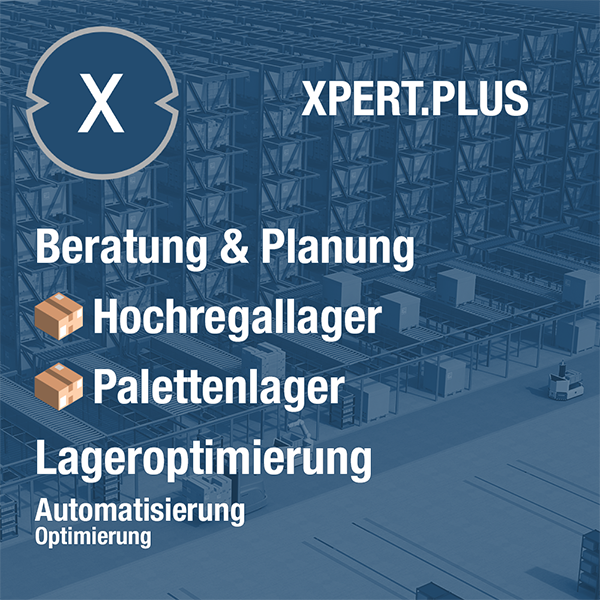
Xpert.plus warehouse optimization – high -bay warehouse such as pallet warehouse advice and planning
We are there for you – advice – planning – implementation – project management
☑️ Our business language is English or German
☑️ NEW: Correspondence in your national language!
I would be happy to serve you and my team as a personal advisor.
You can contact me by filling out the contact form or simply call me on +49 89 89 674 804 (Munich) . My email address is: wolfenstein ∂ xpert.digital
I'm looking forward to our joint project.







